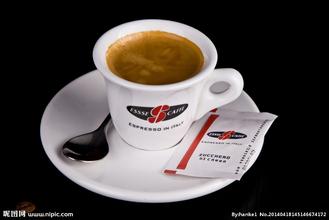What are the skills of roasting and preservation of coffee beans
There are many ways to roast coffee. I'll say a relatively simple one.
Before the coffee is roasted, the coffee should be treated by natural method or washing method, and then the coffee can be roasted. First, it is baked in a large rotating barrel. After 5 to 7 minutes of intense heat, the water in the coffee beans gradually evaporates. At this time, the coffee beans begin to turn yellow and produce a strong aroma. Eight minutes later, when the "first burst" began, the coffee beans doubled in size and crackled. At this time, their color is light brown. After baking in a container for 10 to 11 minutes, the coffee beans become darker and darker. When roasted for 11 or 15 minutes (depending on the type of coffee), all the flavors of the beans are released, and most of these flavors are balanced. At this time, the "second explosion" begins, which marks the end of the roasting process of coffee beans. Just move the coffee beans to the cooling plate.
Save
Coffee is a fresh drink, its enemies are oxygen, light, heat and moisture. In order to ensure the freshness of the coffee, the coffee should be kept in a dark, sealed container at room temperature. It is best not to keep fresh coffee for more than a week.
How to bake coffee beans
Roasting and mixing Roasting & Blending of Coffee beans
When high-quality coffee beans are picked, the most important step in making them gourmet coffee is roasting and mixing.
A master baker must have both the temperament of an artist and the rigor of a scientist. This ensures that the sugars and other carbohydrates contained in the coffee are carbonized during roasting, resulting in the well-known coffee fat and good coffee of high quality and consistent style. Academically, this subtle chemical is not really grease (because it is soluble in water), but it is the source of the aroma of coffee.
Professional coffee is generally roasted in small batches. The most common baking methods are drum baking and hot air baking.
The drum roaster puts the coffee beans in a rotating vat and burns gas or wood to bake them.
When the desired baking degree is reached, the coffee beans can be poured into a cooling funnel to prevent overbaking.
A hot air roaster, also known as a fluidization air roaster, roasts coffee beans by rolling them in hot air.
Most raw coffee beans are roasted at a temperature of nearly 400 degrees. During the baking process, the volume of coffee beans expands by more than 50%, while their weight decreases.
The color of lightly roasted coffee beans is between cinnamon and light chocolate. Because of its sour taste, it is generally not used to make espresso.
Deep baking, comparatively speaking, has a more bitter and sweet flavor. The aroma extracted from coffee beans is proportional to the baking time.

Important Notice :
前街咖啡 FrontStreet Coffee has moved to new addredd:
FrontStreet Coffee Address: 315,Donghua East Road,GuangZhou
Tel:020 38364473
- Prev

The roasting degree of coffee beans
Coffee beans have a history of roasting beans for hundreds of years. Without these scientific tools, how to judge the whole exothermic reaction of western heat? To put it simply, the baking process is judged by changes in appearance and temperature. The whole baking process can be divided into four stages: 1. Steaming stage: 00-10min; lower bean-140C; this is the most important process of endothermic reaction of coffee beans.
- Next

How long is the storage time of coffee beans?
1. Unopened coffee beans: suitable for storage in a cool, well-ventilated environment and at a temperature suitable for 18C-22C. Try not to put it in a dry place (the humidity is too dry below 54%), so its storage environment is similar to that of red wine. two。 Opened coffee beans: when the coffee beans come into contact with the air, their flavor begins to lose, and a complete coffee bean is empty.
Related
- Does Rose Summer choose Blue, Green or Red? Detailed explanation of Rose Summer Coffee plots and Classification in Panamanian Jade Manor
- What is the difference between the origin, producing area, processing plant, cooperative and manor of coffee beans?
- How fine does the espresso powder fit? how to grind the espresso?
- Sca coffee roasting degree color card coffee roasting degree 8 roasting color values what do you mean?
- The practice of lattes: how to make lattes at home
- Introduction to Indonesian Fine Coffee beans-- Java Coffee producing area of Indonesian Arabica Coffee
- How much will the flavor of light and medium roasted rose summer be expressed? What baking level is rose summer suitable for?
- Introduction to the characteristics of washing, sun-drying or wet-planing coffee commonly used in Mantenin, Indonesia
- Price characteristics of Arabica Coffee Bean Starbucks introduction to Manning Coffee Bean Taste producing area Variety Manor
- What is the authentic Yega flavor? What are the flavor characteristics of the really excellent Yejasuffi coffee beans?

